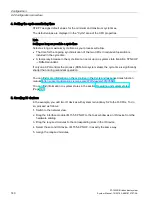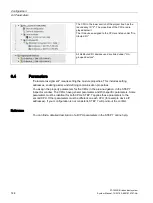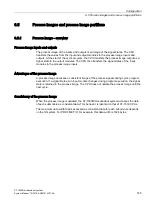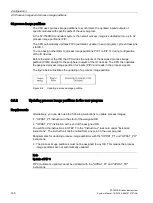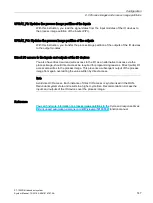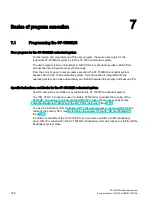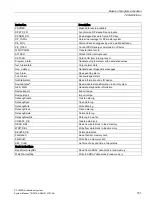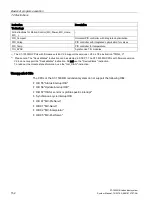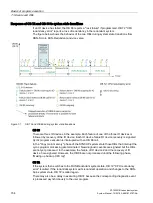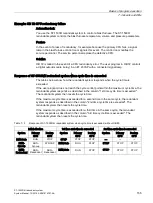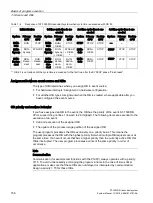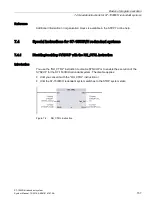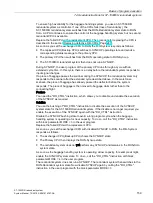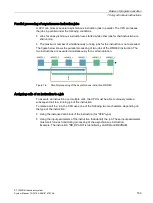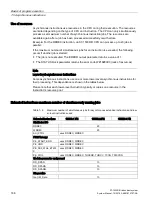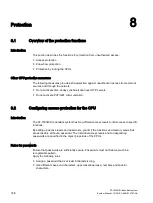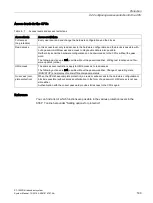
Basics of program execution
7.3 Events and OBs
S7-1500R/H redundant system
154
System Manual, 10/2018, A5E41814787-AA
Response of OB 72 and OB 86 to system state transitions
If an IO device has failed, the OB 86 reports a "rack failure" if programmed. OB 72 "CPU
redundancy error" reports a loss of redundancy in the redundant system.
The figure below shows the behavior of the two OBs during system state transitions from
RUN-Solo to RUN-Redundant and vice versa.
Figure 7-1
OB 72 and OB 86 during system state transitions
OB 86
There are three IO devices in the example. Each failure of one of the three IO devices is
followed by recovery of the IO device. Each IO device failure/IO device recovery is signaled.
Cyclic program execution is interrupted with an OB 86 call.
In the "Copy main memory" phase of the SYNCUP system state those OBs that interrupt the
cyclic program processing are terminated. New diagnostic events are signaled but the OBs
are not yet processed. In the example, the failure of IO device 2 and the recovery of IO
device 3 are signaled. However, the OB 86 are not processed until the following phase,
"Making up backup CPU lag".
OB 72
If the system then switches to the RUN-Redundant system state, OB 72 "CPU redundancy
error" is called. If the redundant system exits redundant operation and changes to the RUN-
Solo system state, OB 72 is called again.
There may also be a delay in executing OB 72 because the corresponding diagnostic event
is processed asynchronously to the user program.
Summary of Contents for Simatic S7-1500H
Page 1: ......

